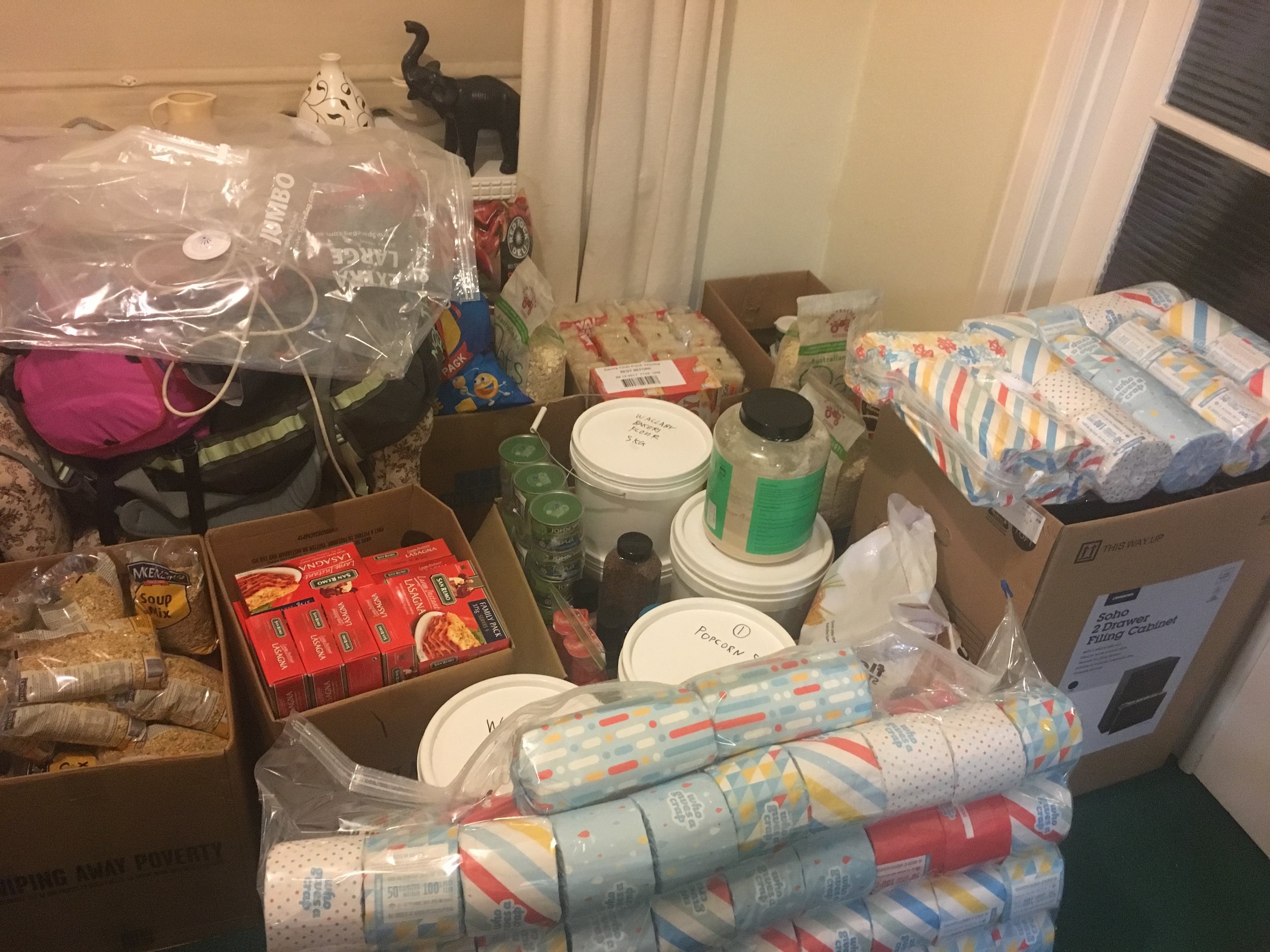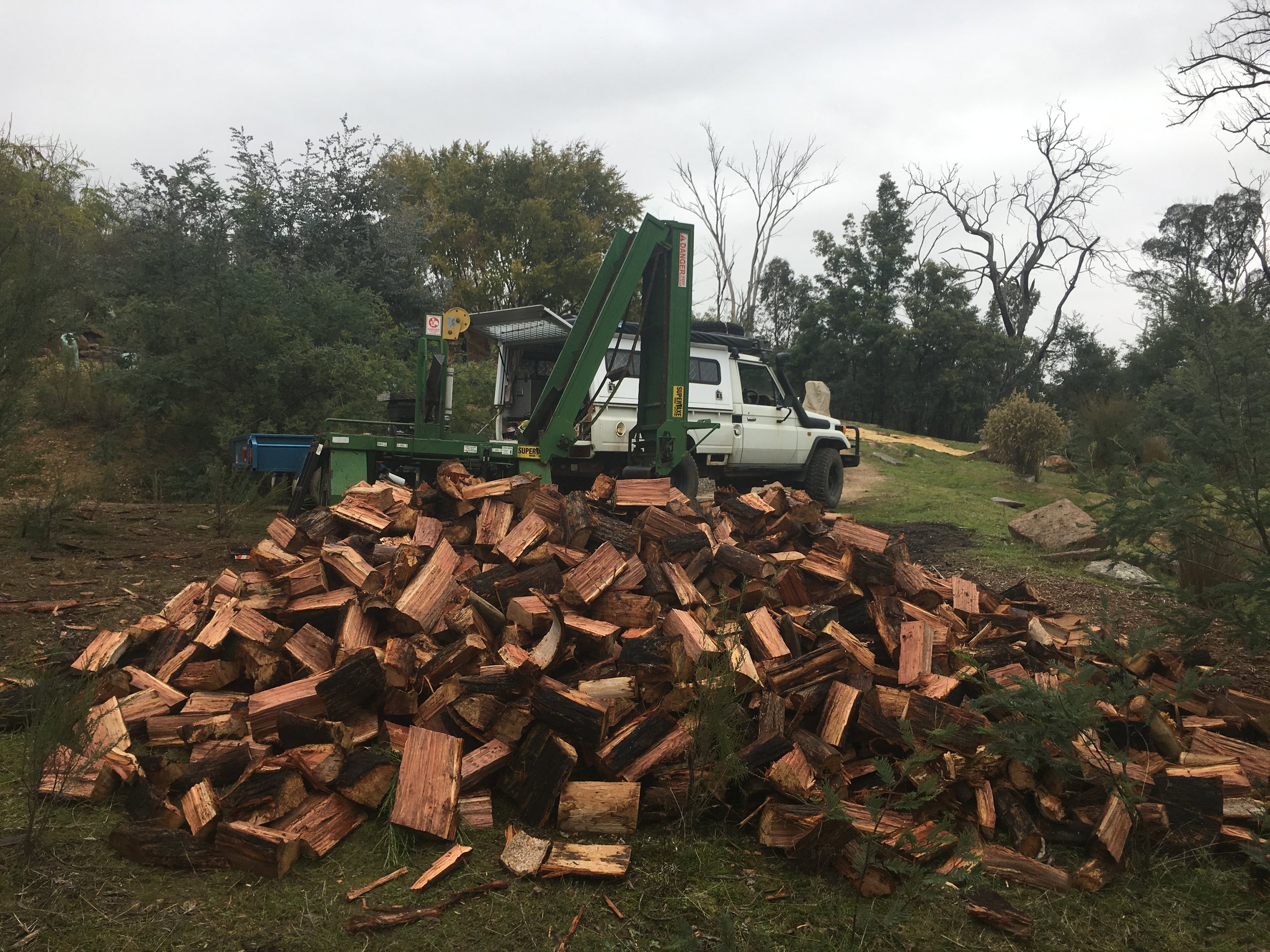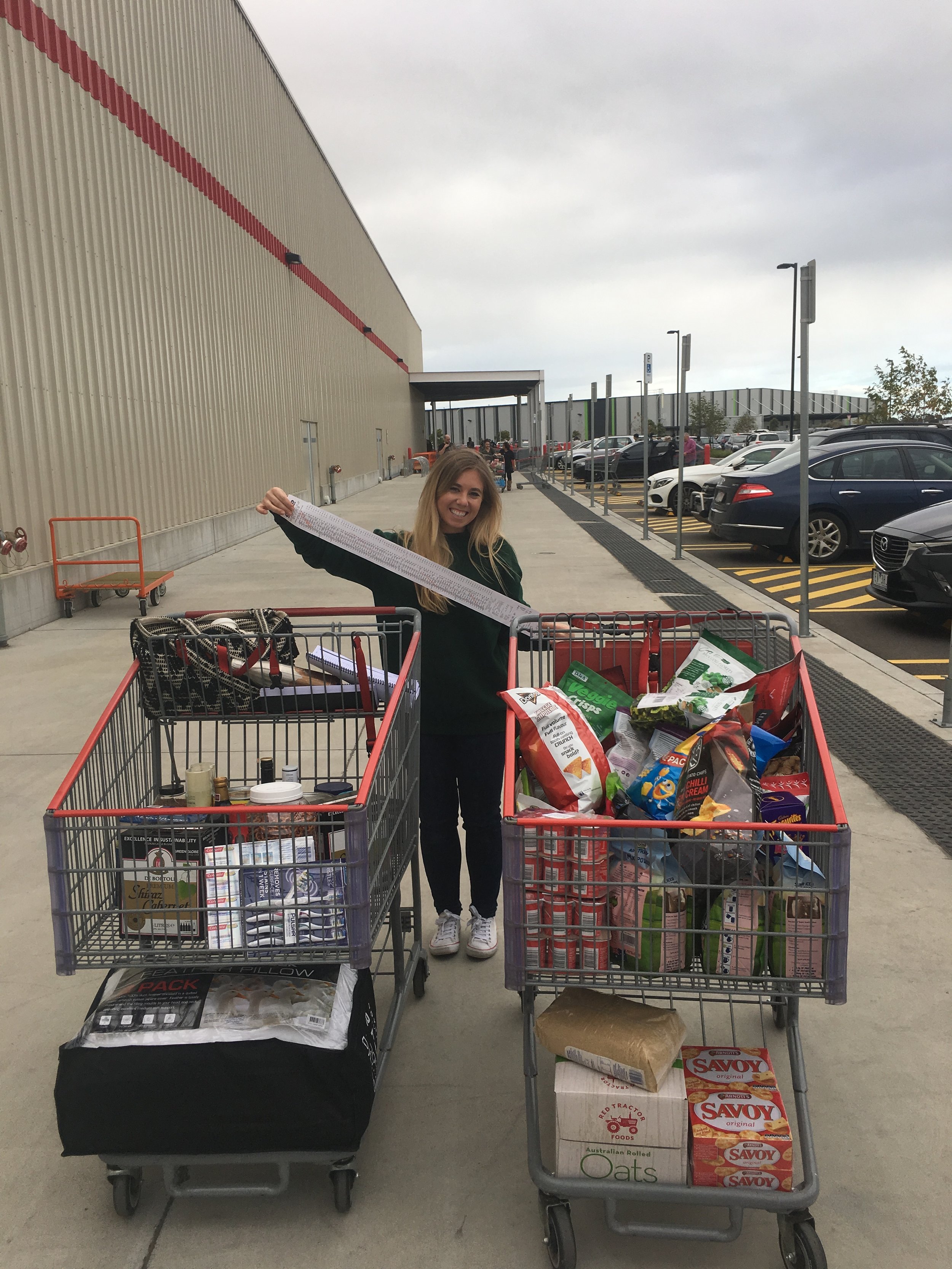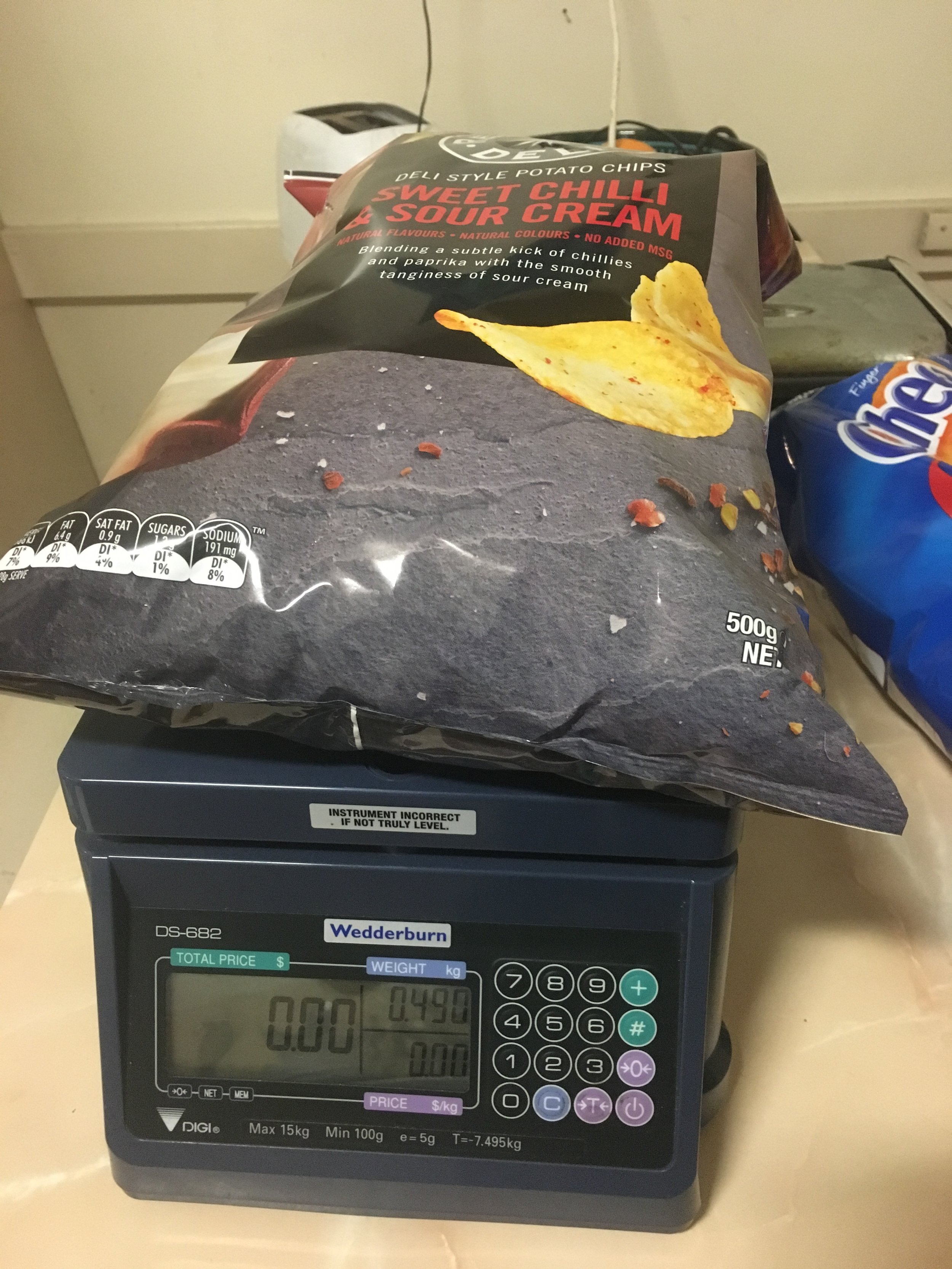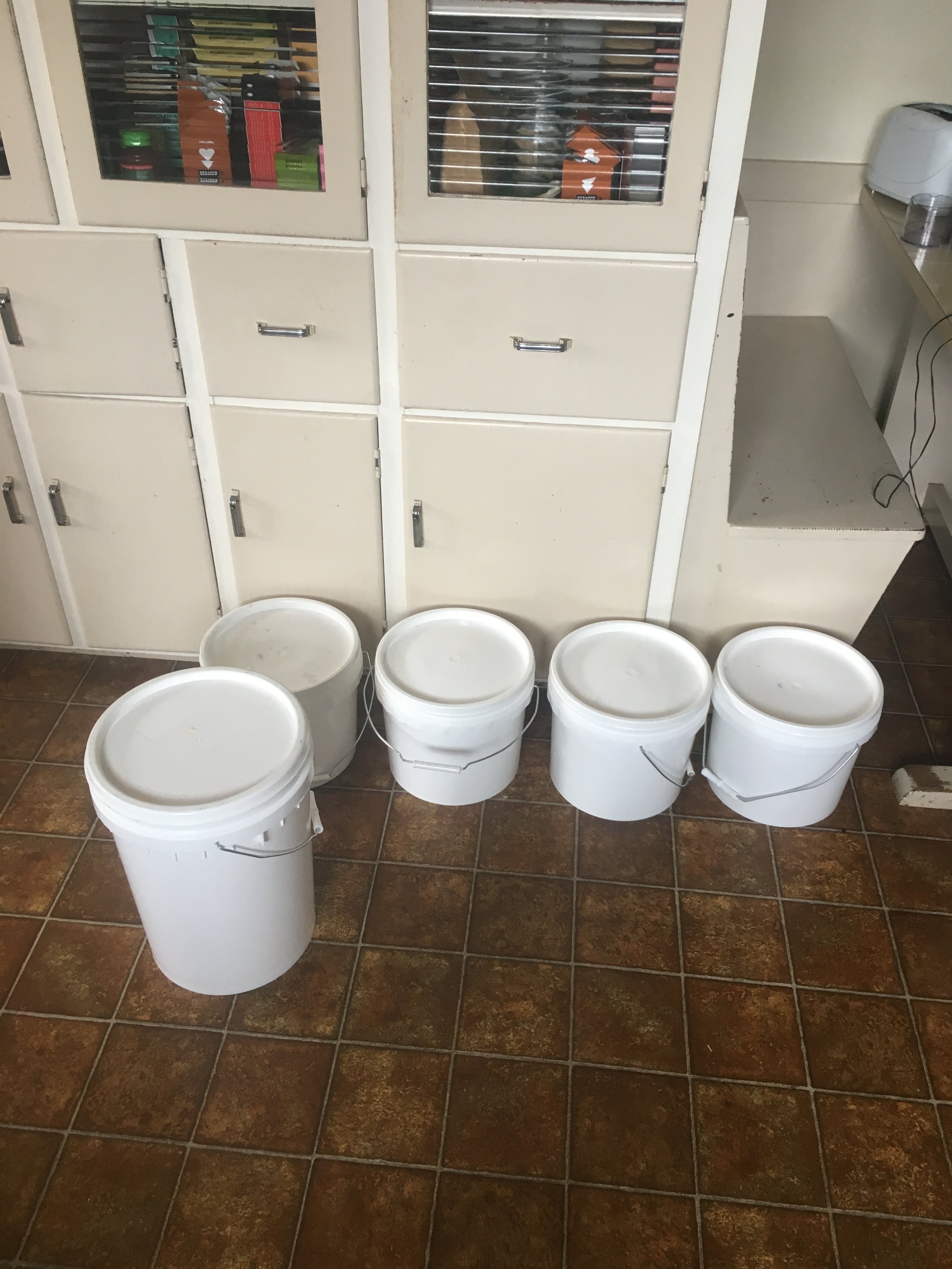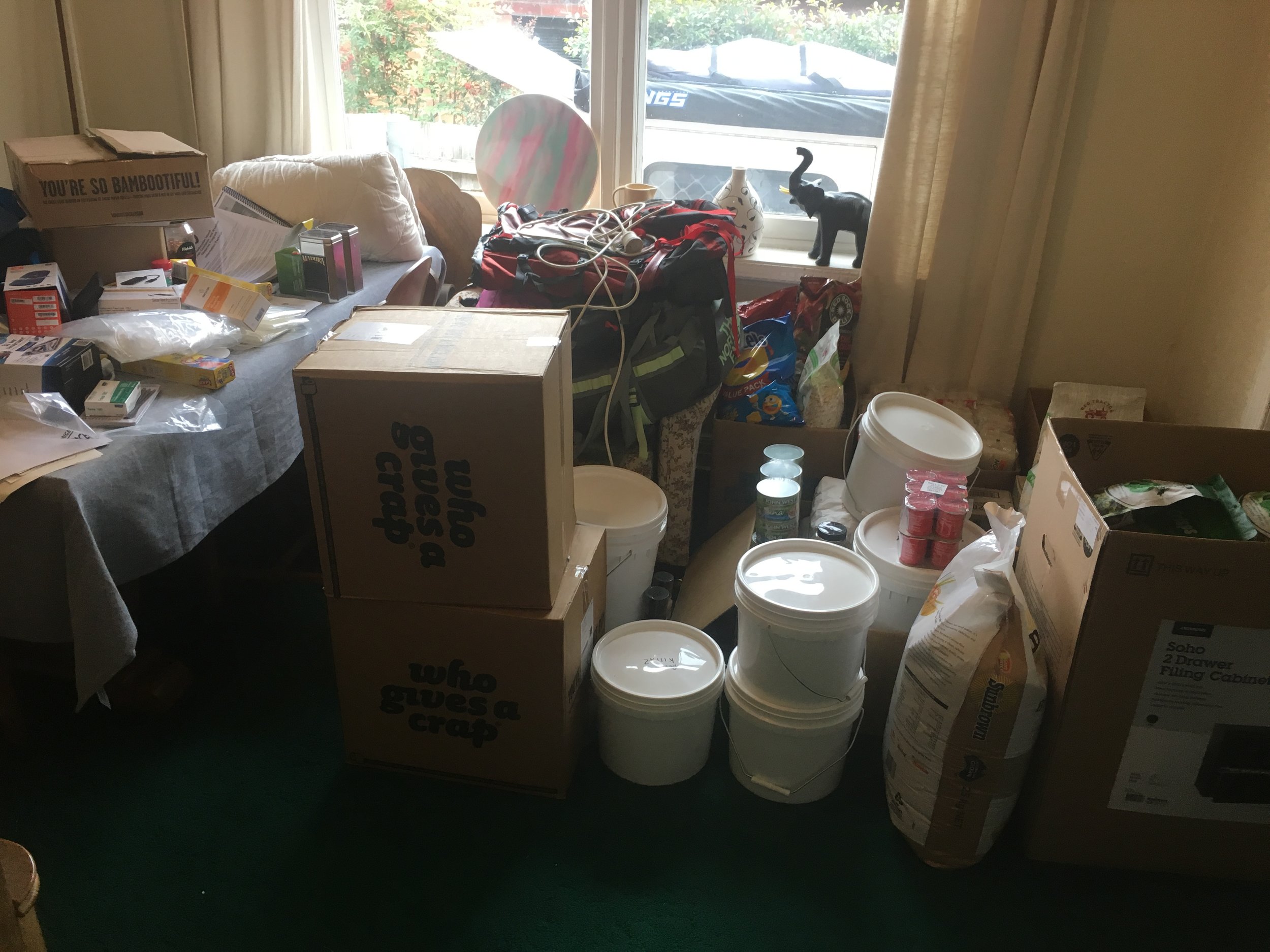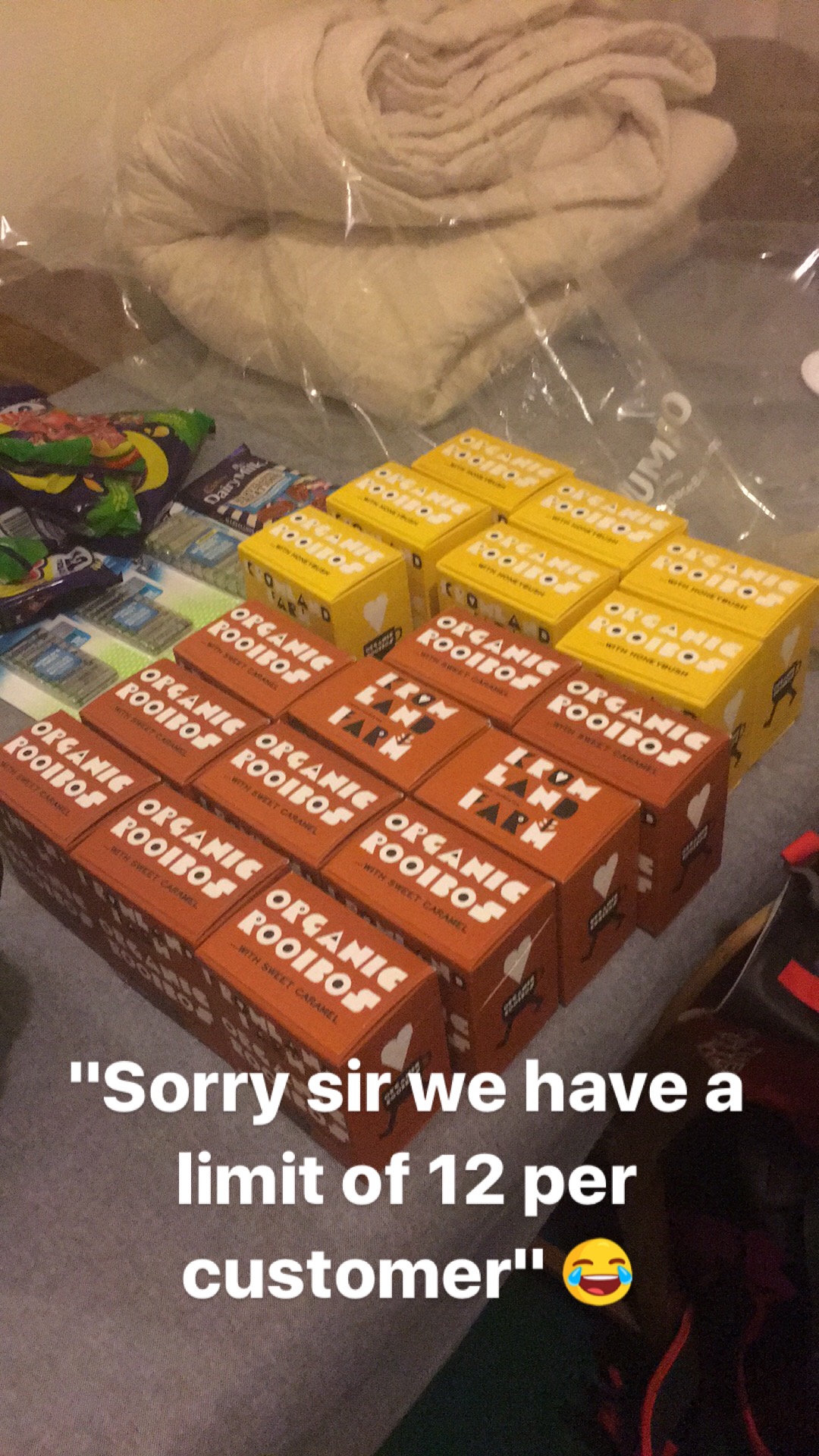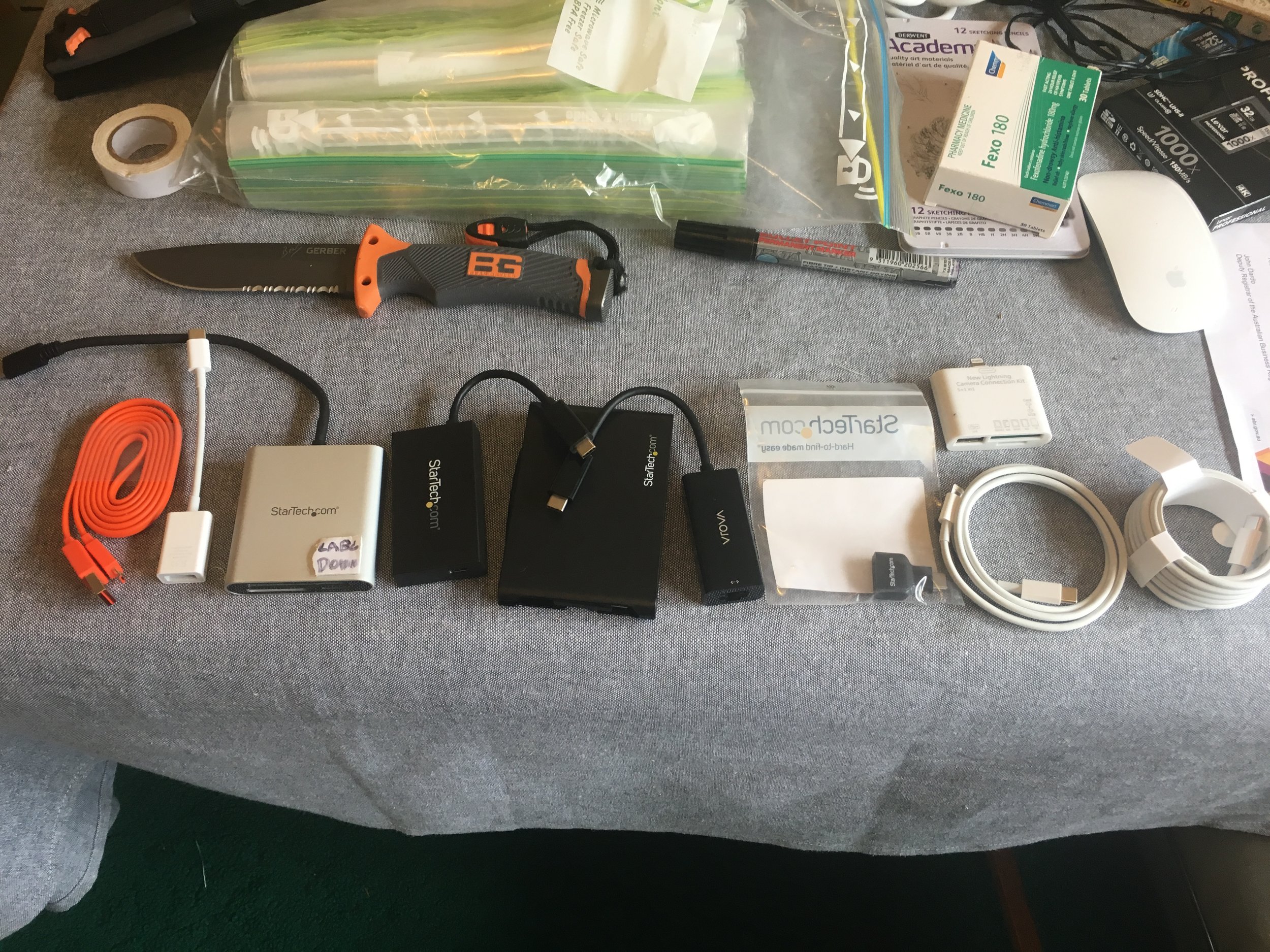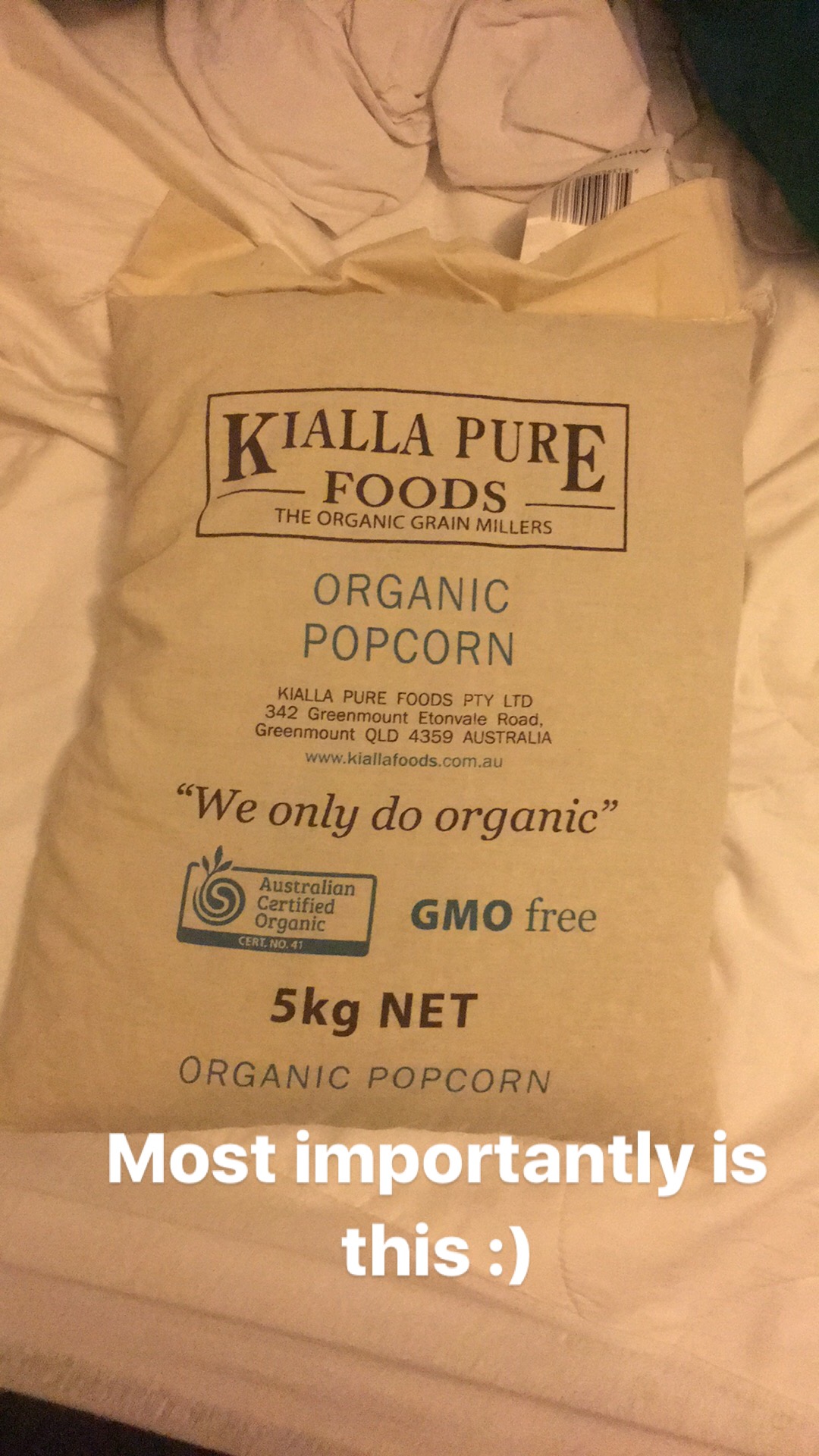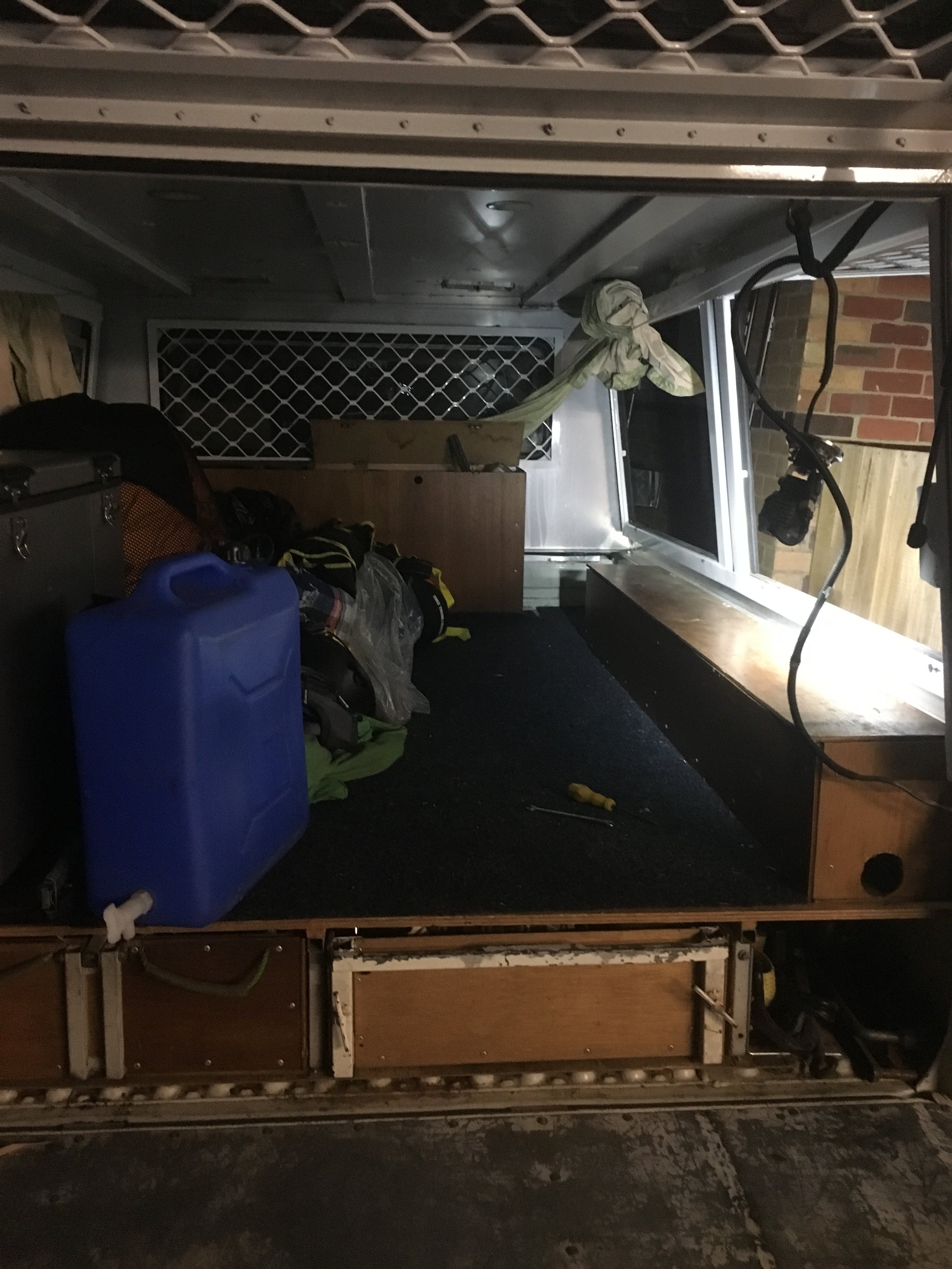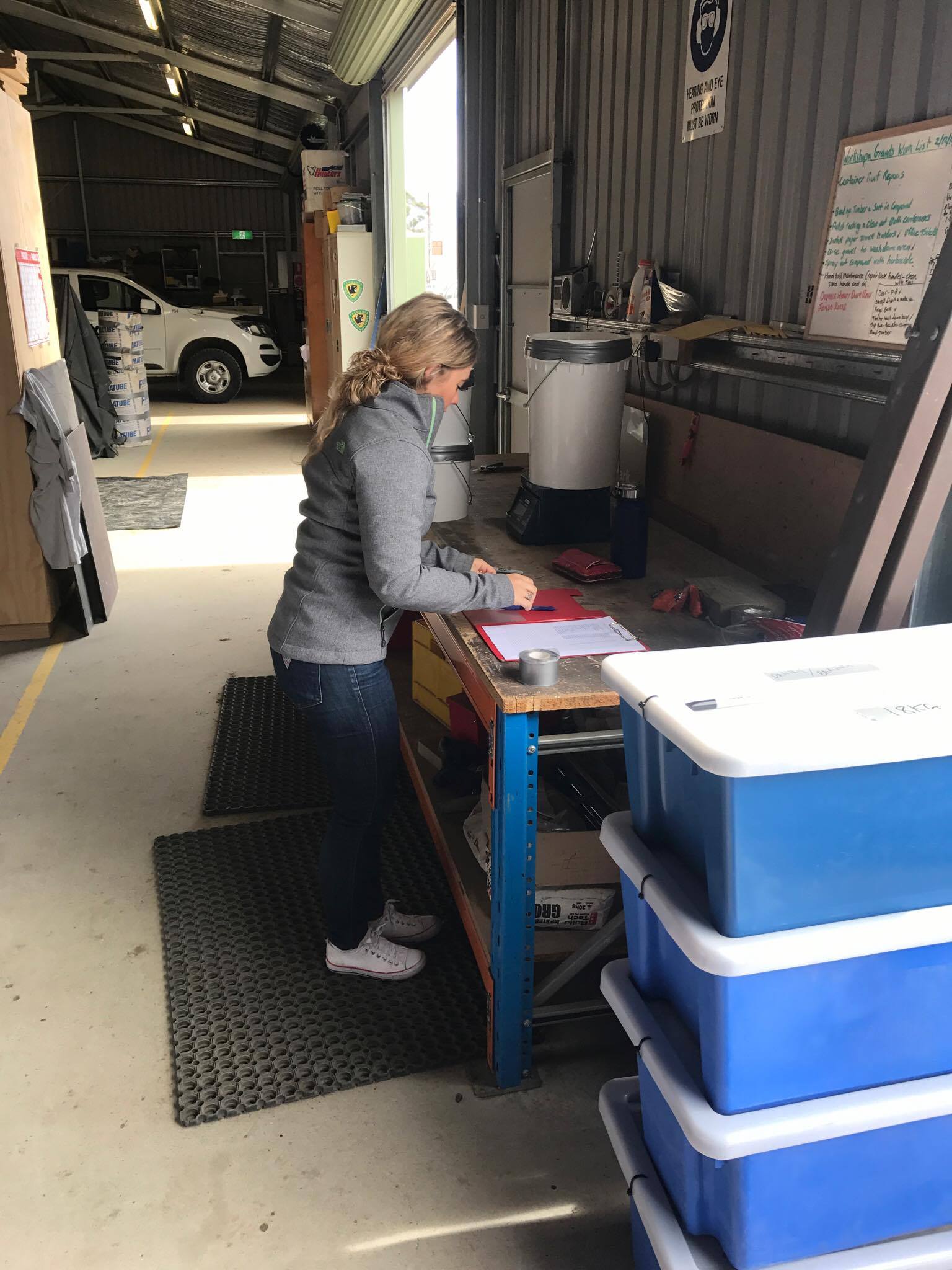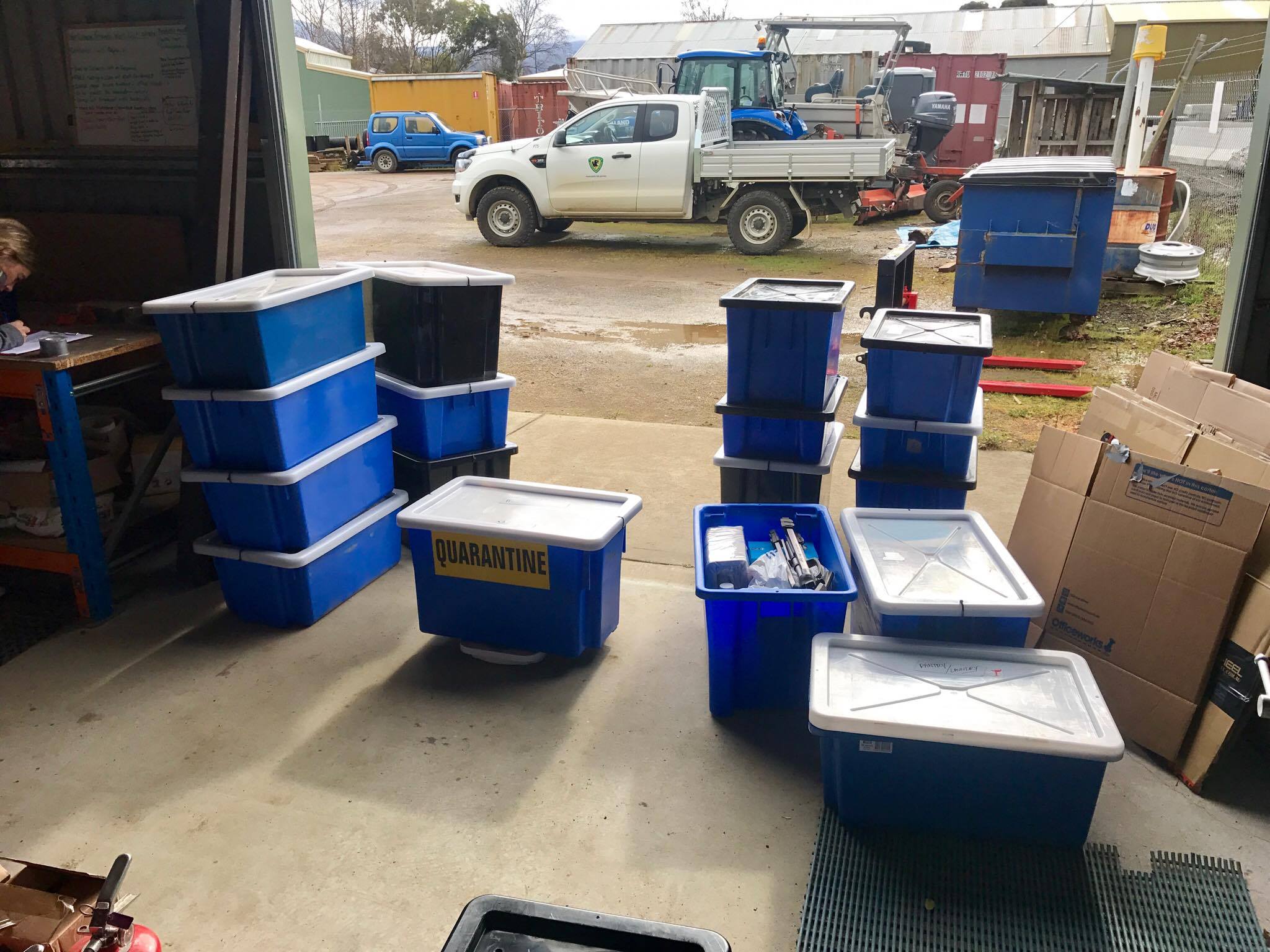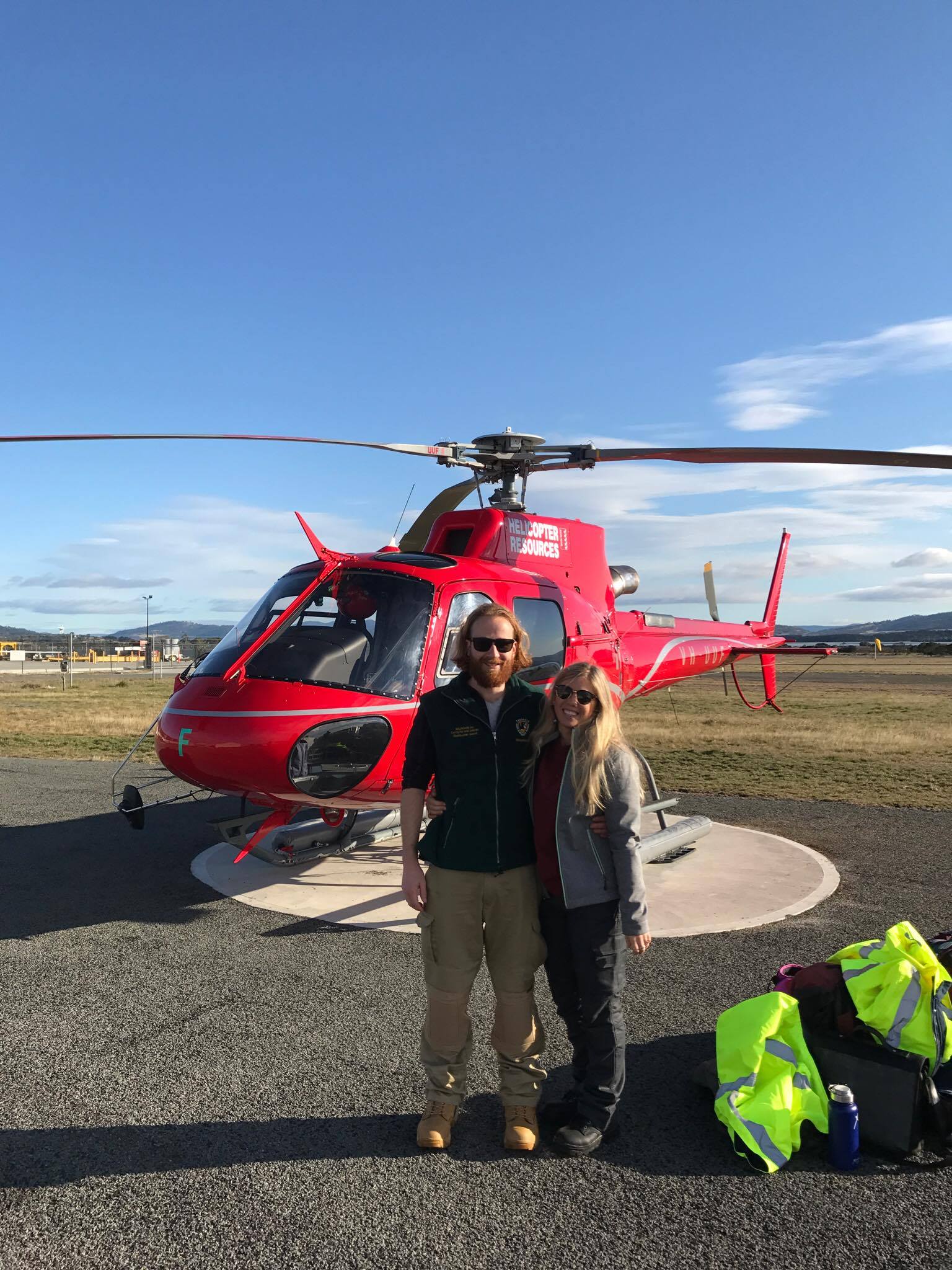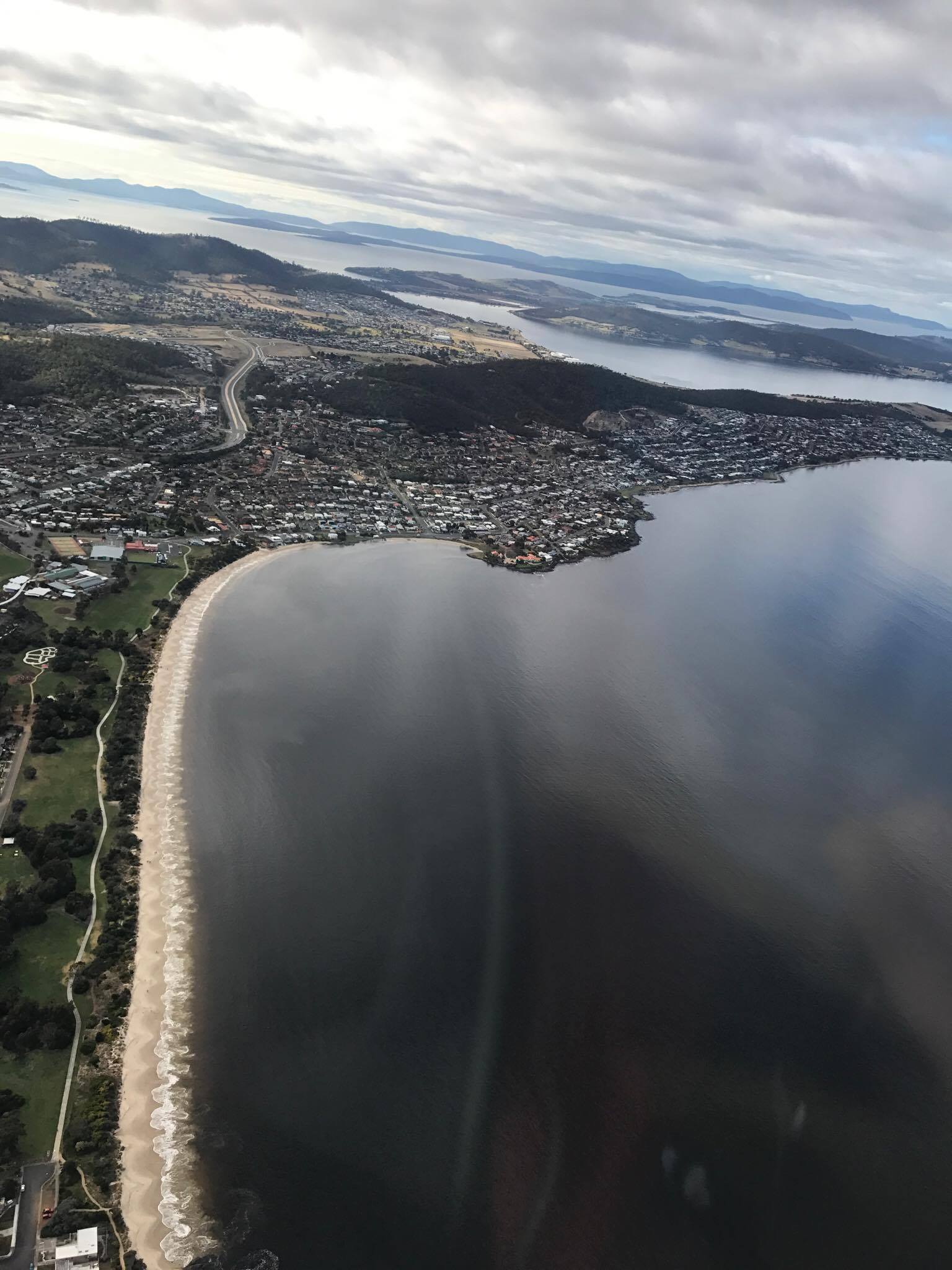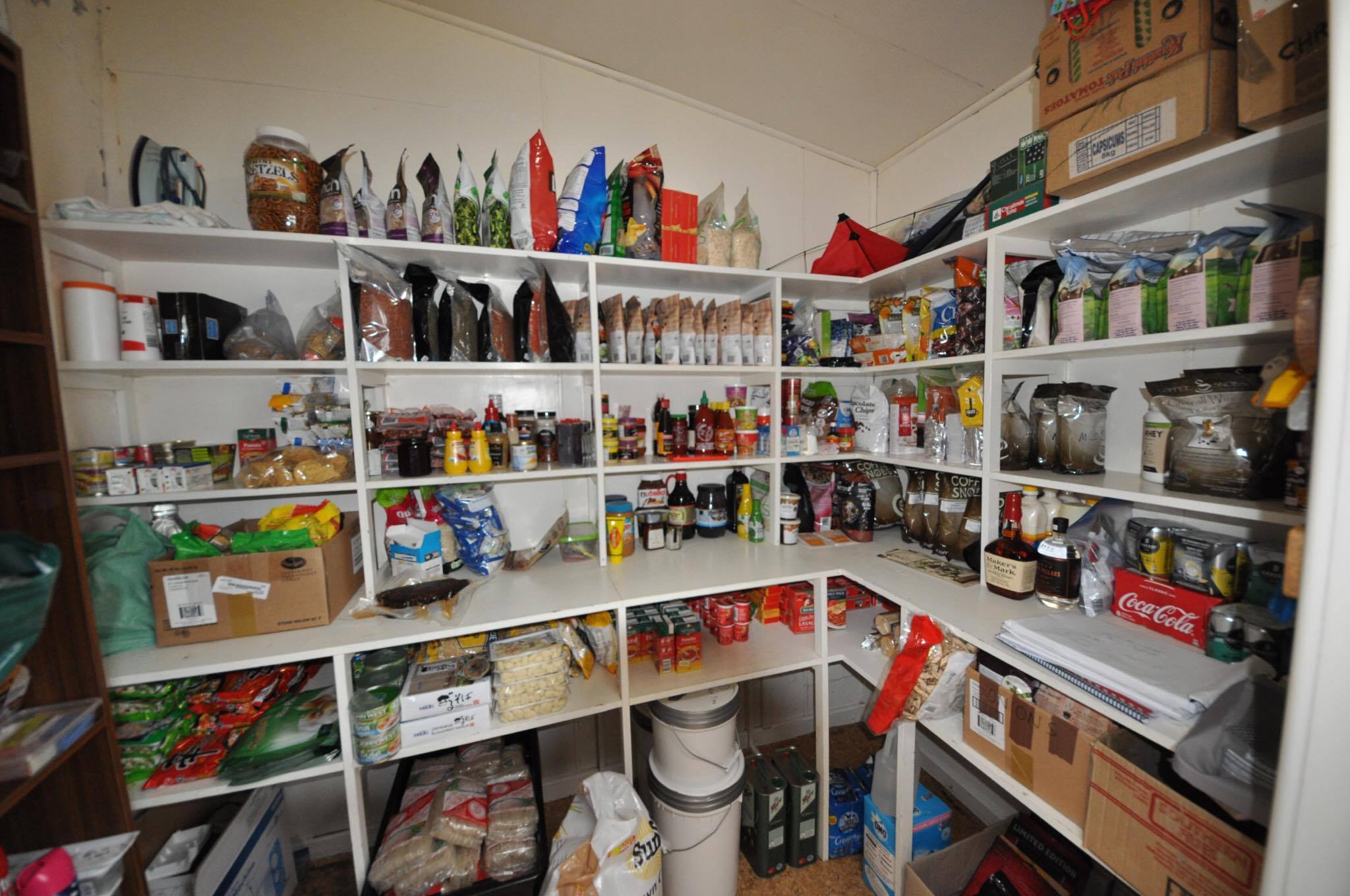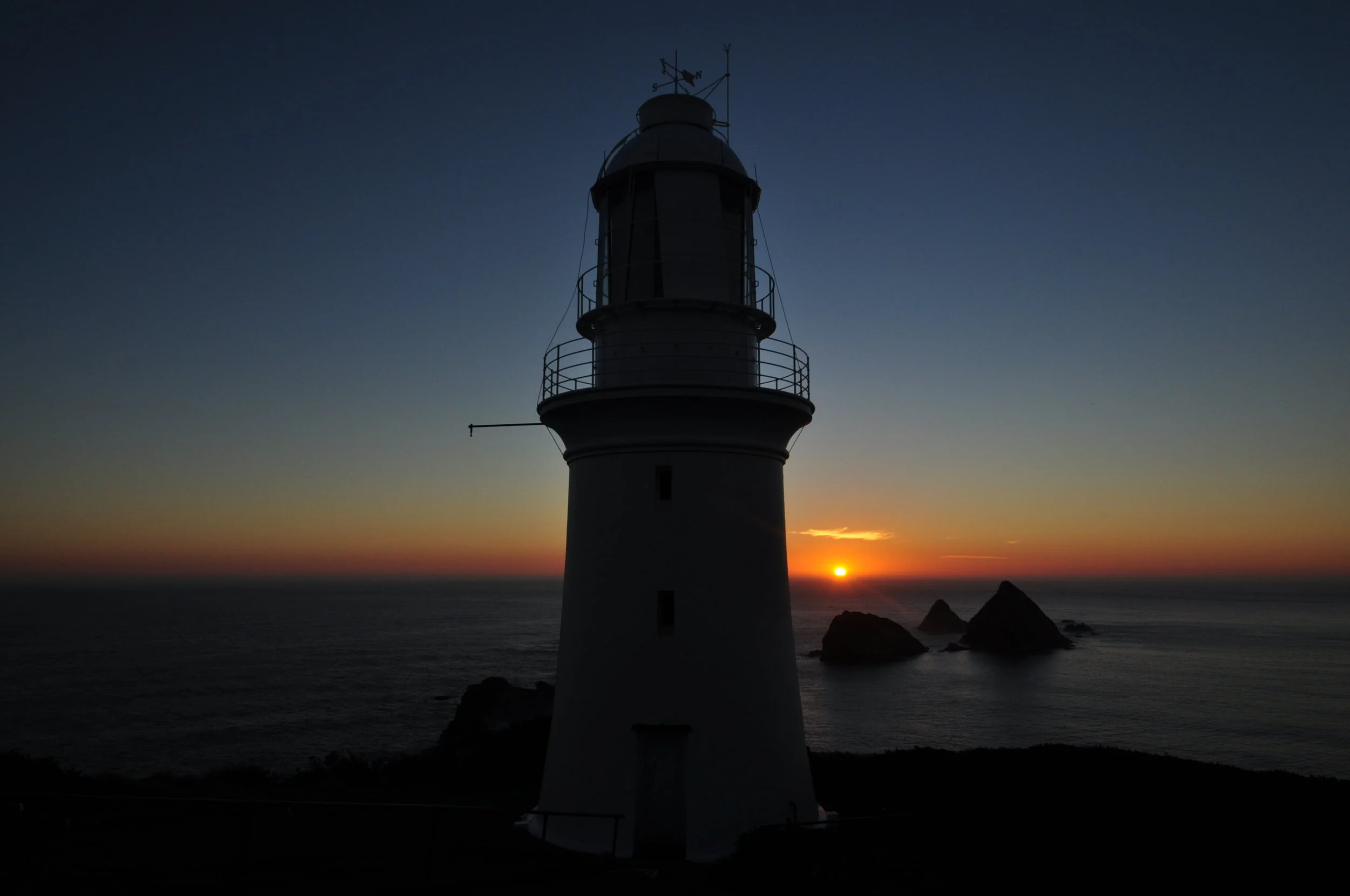How to prepare for 6 months on Maatsuyker Island
How I (we) prepared for 6 months on the remote Maatsuyker Island, Tasmania:
Parks and Wildlife service Tasmania recruited for a 2 year period - four groups of two people were sought for four six month stints. The application papers didn’t say you had to be in a relationship, you could be best mates or brother and sister! In my case, Taylor is my partner. When you apply, you tick which period you want to complete; we preferred the first period, just because it’s really hard to foresee where you will be in 1-2 years time! The downside of this is we had less time to prepare/buy/pack/leave. The following post is designed to help out anyone thinking about applying for Maatsuyker, or packing for any relevant extended trip. I will upload a complete food list when I can. While the content isn’t itemised, it does outline our thought process and may prove useful. Feedback welcome: Maatsuyker.Tasmania@gmail.com
Good old money:
One of the first things we did is write down everything we wanted to take in a perfect world, where money wasn’t an issue. I’m comfortable with telling you, the reader, that I have a secure job with an average income. Taylor was also working. However, like many Australians I bank on getting a half decent tax return each year. This year would be the most important yet. We both wanted laptops, decent photographic gear and a GoPro video camera. Food was going to cost at least 3-5k. Then there was specialty clothing, bedding (had to be warm!), bathroom products, hygiene products, memory cards, hard drives, art supplies, vegetable garden seed etc. The list goes on and on. The two big ticket items were MacBooks, those things are ridiculously expensive! There was also the uncertainty of staying in Hobart for 2-3 weeks prior to leaving (training/shopping) for the island. Hobart isn’t cheap, this could cost thousands!
And so we compared savings, worked out how much we’d earn in that short period before leaving, figured out extra work we could do and decided to take my Landcruiser over on the ferry. The reason being so we could fit all of our food/gear under the canopy - it’s a big heavy 4WD and there was no way we could fly supplies over.
Parks and Wildlife Tasmania deliver the program in partnership with Friends of Maatsuyker Island (FOMI). FOMI are a volunteer conservation group who are part of Wildcare Tasmania. Luckily for us, and all caretakers, FOMI are an amazingly supportive group. They complete a whole host of hard work on Maatsuyker Island. We had many offers of free accommodation with members for our time in Hobart! It definitely feels like been part of a family. FOMI will be visiting this year for a working bee so I will write up something more detailed on them then.
Back to money, luckily for us one of my friends in Hobart offered us accommodation for the time! Thank you, Lucie! This solved one problem. I put my hand up for any overtime at work and registered on Airtasker. Airtasker is a free ‘app’ you install on your phone that lets you bid for work that people put online. Out of the thousands of jobs I found, I only accepted the ones that weren’t going to rip me off. It was always hard manual labour: chainsaw work, wood splitting, etc. Most of the time people wanted something for nothing. In any case, I got work on this app and made a few thousand in a short period. Taylor also helped out during what were often very long working days moving heavy wood. We learned quickly that we worked well together, we had fun too!
As time moved on, we went to Costco, a large supermarket chain that has bulk food, and I mean bulk! We spent about 1500 there in one trip - the trolley nearly broke, and at the end of it we were exhausted. We both ate way to many crappy hotdogs on the way out. The advantage of this place was that everything was supersized and cheap by comparison to buying in small amounts. We also went to asian groceries, buying 25kg sacks of rice, noodles, rice noodles and cooking sauces in bulk. Every single thing we bought we aimed for plastic packaging to save weight. I believe we only had 2-3 glass bottles by the end of it (whisky, gin and balsamic vinegar). If weight is a concern for you, I recommend aiming for no glass too!
The month or so before leaving for Tasmania, Taylor went to the USA to visit family. We factored this in, she hadn’t seen family for a long long time. This coincided with me filling in for my Supervisor whilst he was away for 6 weeks, which meant more pay. It was a fortunate coincidence. It also meant I was so busy I didn’t have time to stop and think how much I was missing Taylor until I got home each night. Home was with my younger sister and her partner for 3 months. Here the rent was much cheaper and we had a whole room for storing gear! Thanks Fern/Matt! We got the bond back from our rental, two tax returns, banked all our income from the extra work/overtime, asked for money in exchange for any Christmas presents (thanks!). I used up all my leave (1 month and 5 days), which would be paid in instalments over the period we were in Tasmania and the first couple of weeks on Maatsuyker. Once actually on the island, our only expenses would be one mobile plan, two car registrations and health insurance. Car registration is annoying, but in Victoria if you let it lapse, you are required to get a complete roadworthy certificate again! It costs a ton!
We knew we would employed by the Bureau of Meteorology as Weather Observers at a rate of $12 per weather observation. We also knew we would do two readings each day (0600 and 0900) 7 days per week for 6 months. Roughly 180 X 24. When you work this out, you realise it will pay for some of the food, some of the rego, etc. Accommodation on the island is free. Well, sort of - we are volunteer caretakers but we work very very hard!
We managed to reach our goal in a very short amount of time through hard work and being carefulwith what we spent. It takes two people to do this, and you need a support network. Money can be stressful and it definitely stressed me out quite a few times. Taylor helped a lot. I am the type of person who is average with money unless it’s something I care about, I definitely cared about Maatsuyker.
The nitty gritty:
The application guide for Maatsuyker states that you get 325kg of gear per person including everything. We were told up to 350kg would be ok so we aimed for a total of 700kg for everything. It adds up fast. I bought some good quality scales that weighed up to 15kg. These were really useful for keeping track of things. Our end total was more than 700kg, in spite of trying our hardest to keep it under! There is some flexibility with weight, but remember, helicopter trips are expensive! There is always other gear that needs to be flown to Maat (timber, fuel etc) and it will likely be to your benefit!
There was also the mandatory training/assessment to complete; first aid level 2 (minimum), marine radio operators ticket (LROCP or SROCP) and drivers license as well as a complete physical and dental examination. The only slightly tricky accreditation to obtain is the Marine Radio Operators Certificate. There are many different types and it an be confusing to know which one to do. For Maatsuyker you need the SROCP ticket at a minimum, this is the Short Range Operators ticket, we completed the LROCP which is the Long Range version. Basically it means you can operate a HF radio which Maatsuyker is no longer on Maatsuyker anyway. But it is only a few extra questions as part of the test. This test is multiple choice and you can study the practice questions online (Tasmania University have them online). You will likely need to book your place in the exam in advance as it's not run that often! I did mine with Volunteer Coastguard in Melbourne. Please donate some money if you can to them on the night!
Taylor and I had largely completed the bulk food shopping relatively early on. In the final countdown it was down to the nitty gritty stuff. When I say final countdown I mean the last 2 months. I spent my weekends editing a live spreadsheet and communicating with Taylor over the Internet. We could both view/edit/leave comments on the spreadsheet and this was invaluable in figuring out what we were missing. Using the scales we weighed absolutely everything, down to the toothbrush! We also removed all excess packaging, which filled at least 4 large bins, it was disturbing! We created 7 pages in a spreadsheet: food/drink, bathroom, electronics, bedroom, wellbeing, fitness, etc. and recorded and added all the weights for everything as we bought it. This was time consuming work. My sister would walk into the room and laugh at the situation - me sitting there late at night listening to music and weighing things for hours and hours. Not to mention, the boxes strewn everywhere - organised chaos!
In the time I was filling in for my Supervisor, I had to be highly organised: meeting budgets, managing hours worked by staff, and maintaining a strict excel spreadsheet program. I actually found this super helpful when it came to organising things for our trip. I recommend creating a neat spreadsheet with helpful categories. You cannot pack for 6 months without this. I also found it helpful that everyone at my work was interested in what my partner and I were doing. There were many good ideas from people that helped, and many funny conversations around ‘the island’ during work hours: “what are you going to do if pirates come, what if the world ends and you’re stuck there, can you fish (I wish!), will you eat the mutton birds, will your partner kill you?” All valid thoughts, haha! I would like to thank all my workmates for been so great.
I hear you, dear reader asking, “but how do you know how much food you need for 6 months”? Throughout the entire process, we spoke to the current caretakers on the phone, spoke to previous caretakers, emailed parks/FOMI questions, spoke to Parks on the phone (thanks Jez!), researched growing conditions for vegetables in Tasmania, read past caretaker’s notes on the island, googled everything Maatsuyker we could find on the Internet, and studied many food/packing lists from previous caretakers. The caretaker program used to be 4 months, but it was extended to 6 months so we had to bear that in mind looking at the lists.
Based off this communication and research, we worked out how many main meals we would need - 180 x 2 (lunch and dinner) - keeping in mind dietary requirements, and the fact that we would be expending much more energy in the cold environment, engaged in more physical work. Everyone’s dietary requirements are different, and we were advised not to bring things we wouldn’t usually eat, so we factored that in when completing our shopping. Personally, we eat a lot of meat, so we would end up buying that in Huonville, Tasmania at Griggs Butcher (they are great!). I believe we had one of the highest meat totals (approx 91kg). We also eat a lot of asian type meals. Breakfast was quite easy. There is an EasiYo yoghourt maker on the island, so we bought the sachets to make that. We also had a lot of oats, granola and muesli. All together, we had enough sachets of EasiYo to make 10kg of yoghourt! I can say in one month, we have used 1kg per week. This will depend on your eating habits; others have used much less!
Baking goods were something neither of us really had much experience with. Things like flour for baking bread, etc. We ended up buying 10kg of spelt flour and 20kg of Laucke Wallaby Bakers Flour. I got locally milled spelt from a place in Brunswick, Melbourne. We would be making our own bread, so with this quantity we could bake 2.3 loaves per week. We also bought baking powder, choc chips and other goods to make our own cookies/sweets. To go with this, we needed around 5kg of sugar. We We bought around 9kg of dried fruit too. Again, a post on where we shopped would be helpful and I will endeavour to complete this at a later date.
We had all our dried food bought before we left Melbourne. At some point, I will attach our food list to this post! Bear with me on this, I still need to add on the things we bought in Tasmania! Strict quarantine laws meant we couldn’t bring in seeds, fresh meat, eggs/dairy, etc. - this all had to be bought in Tasmania during our training weeks. I ordered stuff online, a lot of stuff. Damn good socks, thermals, hats, medicine/first aid, hygiene products, vitamins, popcorn, a million adaptors for the damn MacBook, art supplies, memory cards, lens, GoPro, cases, clothing, food, etc.! My mum gave us a really good quality wool underlay and woollen doona to take, and we also took my woollen doona!
We thought about how many rolls of toilet paper we needed, toilet paper is heavy! I bought vacuum bags for clothing in the hope that it would save weight. We also bought many ziplock bags for freezing food on the island, and for repacking things prior to leaving. They were a big help.
In the last month while Taylor was away, I measured the interior of my car canopy, figured out how high it was, then got boxes that could just stack two high in the back. I repacked all the food into them. I also bought a waterproof rooftop bag for extra storage in case we needed it on the way over. I spent one night just organising the back of the Landcruiser - it needed to be organised to fit all our stuff! The same night, I dropped boiling water on my foot, and ended up at the doctors the following week. It was a stupid mistake that could have led to infection and ruined everything. Luckily it healed up ok.
We also ordered a large amount of dehydrated vegetables in case we had trouble growing things on the island. Have you ever spent $320 on dried broccoli? We have. Freeze dried high quality food is a good way to supplement your list if you have any insecurities about it. There was the matter of alcohol, alcohol is heavy and one of the few things we bought in glass bottles. We also needed home-brew kits, part of the caretaker tradition is to lay down a home-brew for the incoming caretakers.
Taylor arrived back in the country and we were leaving on the ferry for Tasmania in less than a week! We spent more time buying things like hot water bottles, medicine, clothing, food, chocolate (20 blocks), tea and coffee. We bought over 600 tea bags and 9kg of coffee. Hot drinks are a necessity for us, and really anyone on a cold deserted island! Again, my sister laughed when I went to Coles at midnight to buy absolutely every box of Roobois tea they had! And some Hydrolyte because they were on special. We weighed how much coffee we used per plunger pot and figured out enough for a 3 month supply at 2 pots per day (we get one resupply at 3 months in). To go with this we needed milk so we bought around 8kg of powdered milk and 12 liters of long-life milk as a luxury item!
Packing clothing was difficult - Parks provides work wear but personal clothing is a matter of wellbeing for us. Throwing on a pair of track pants inside with a hoody was something we both wanted. With the weight limit on our minds constantly we did stress about it occasionally, I don’t see how you couldn’t in our situation.
We left on a Monday and I finished up at work the Friday before. That final weekend was busy, but it was controlled (mostly) madness. We had to pack clothes, do the final shopping, load the car, make sure we got to the ferry on time and say goodbye. On Sunday my parents/sisters/partners came over and helped out. It was very welcome. We carried out box after box, played music and ate a lot of food. My mum made us a cookbook, ‘Maatsuyker Munchies’, and my sister Fern gave us some of her art to hang up on the island. We absolutely filled the back of my car with what I estimated was about 500kg of food/gear.
Made it to Tassie, now what?
We had around 2.5 weeks planned in Hobart/Huonville area before we left on the helicopter for Maatsuyker. Around 2 of those weeks were training but they were also packing at the Parks depot and meeting FOMI members.
On the day our ferry landed, we made the 4 hour or so trip down to Huonville to meet the Parks and Wildlife staff at their depot. It was great to see everyone again, and we met a few new faces too. After we were showed around the yard we parked my ute up at the depot shed and unloaded all our boxes. Once we unloaded everything, we then began to re-pack all of our gear and food into plastic ‘fish’ bins - these are large plastic tubs designed with quarantine in mind. The last thing anyone wants is vermin on Maatsuyker, or any stray pathogens. It’s really important to clean all your boots of any dirt particles. It’s also important not to introduce any mice/rats/spiders etc. There is a specific product we used that’s also used on Maatsuyker for visitors, which is called F10. At my work it’s known as Phytoclean. We would also be storing my vehicle at the secure depot when we left for the entire period. A very nice guy from Parks called Will offered to run the car for us every now and then too!
Back to re-packing. So we had packed, re-packed, re-packed again, and now we were faced with the final re-pack. We made pretty fast work of it, thanks to good initial grouping of things. For example, sauces/condiments all together, toiletries grouped, you get the idea. We weighed the completed boxes again as we went and tried to keep them under 20kg for manual handling ease. We wrote down each box and a rough description of it’s contents with the weight for Parks. We needed to keep track of the total weight to make sure it wasn’t too heavy for the helicopter load. Each box was cable tied down and labelled. We ended up with a total of about 30 ‘fish bins’ by the time we departed.
Over the next few weeks, in between training (another post on that) we bought more goods. Meat from the local butcher, electric blankets, cheese, fresh vegetables, 15 dozen eggs and more groceries. A thermos (crucial!), as it turns out there is no thermos on the island. We are glad we brought one. We also went to another asian grocer, bulk dried foods are great (mushroom etc). You can also get what’s called Chinese sausage (we learned about this from previous caretakers Chris and Irene), it’s in a sealed packet and doesn’t require refrigeration. Useful for remote trips. We decided we needed more tomato sauce and found one in a cardboard box so we added another 12 boxes of that. We brought around 20 blocks of chocolate! On reflection one month in, I’d say bring more! We also went to Salamanca market and bought more vegetable seeds. I can say so far that our seeds are working very well. Wherever you are going, buy local! And make sure the seed is valid and not expired.
Amongst all this we had a day of shopping for ‘PPE’ with Jez (Personal Protective Equipment), Parks Tasmania pay for this for caretakers. We both got boots, pants, shirts, gumboots, safety glasses, gloves (many types), wet weather gear, kneepads and some new head-torches (to stay on island). I was optimistic and got one pair of work shorts!
Amongst all this, we continued packing at the Parks depot with help from many people along the way. But eventually the day came when we were departing. I had never been in a chopper before and we didn’t know exactly how much we could carry on board, so we had a few small bags largely filled with our laptops. The pilot weighed our bags and asked us how much we weighed too. In addition to myself and Taylor, there was Jez from Parks, and a remote power system tech on board. It was pretty good weather initially. Taylor let me sit in the front and I took it all in. Having never been in a chopper before, when we hit a few patches of turbulence/rain I thought the up and down jerking was normal! The scenery was amazing, waterfalls, old growth forest and then the water’s edge, rugged beaches, and the Maatsuyker group of islands in the distance. We made a beeline for the island, initially flying over the other islands in the group, before flying in from the Northern end of Maatsuyker towards the South.
As we reached the Southern end of the island, the houses came into view and it all became very real. We passed over the main helipad and did a 180 somewhere over the lighthouse. As we banked, I could see out the left hand quarter window located near my feet. The lighthouse flickered by and further out I could see ‘the Needles’, a group of rocks that rise out of the ocean like pyramids. And then we completed the turn and began to hover and land over the helipad. The rotors whirred and we all sat until they slowed and stopped completely. We had made it to Maatsuyker Island.
P.S. Bring good socks!
Thanks again to all Parks staff, FOMI members and my friend Lucie for letting us stay at her place (and her housemates!).



